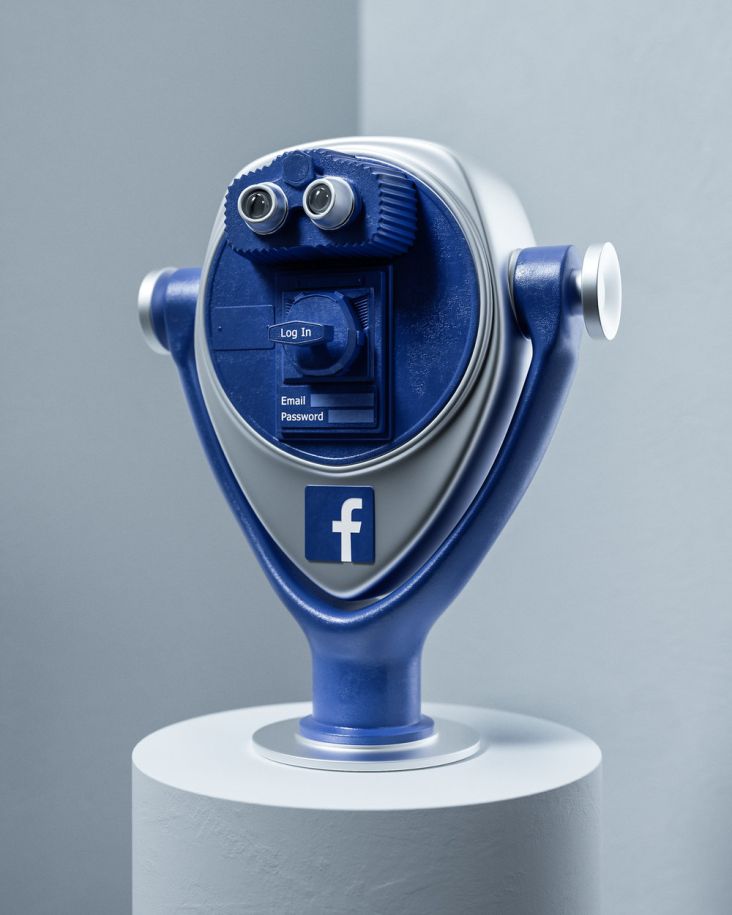Laura Jane Boast on her new magazine Design Giving, finding time for side projects and her love of hard work
Laura Jane Boast is the founder of LJB Studio, a print design studio in Manchester. To say she's passionate about print is an understatement. Pop along to her studio at M One, just behind Manchester's Oxford Road, and you'll most likely find her surrounded by paper, card and foil samples, an excited glint in her eye, working on her next big project.
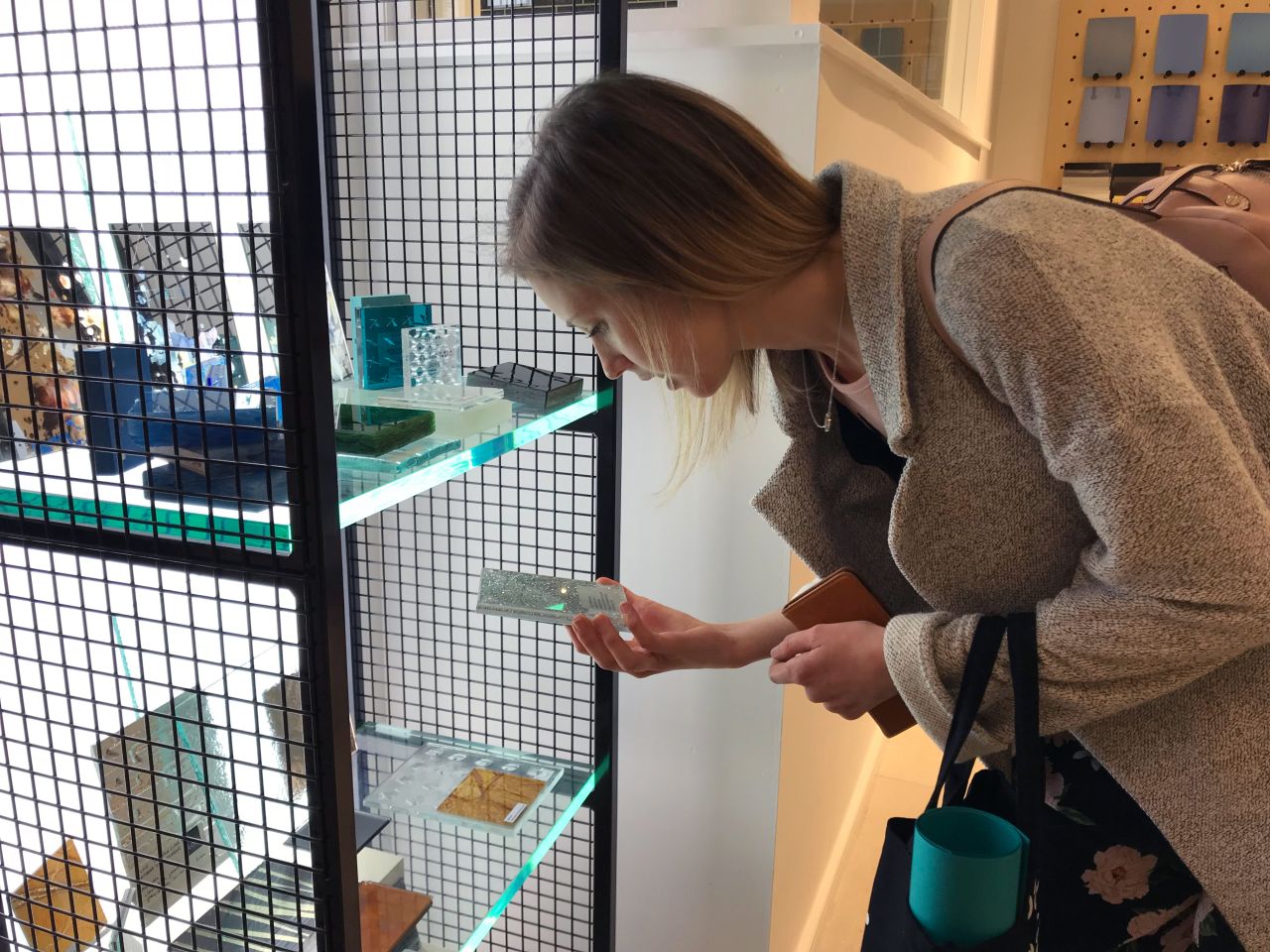
In fact, her healthy obsession for creativity doesn't stop there. Ask her what she's up to at the weekend, and she'll undoubtedly be visiting the latest exhibition or planning the following week ahead. Go to any event in the city, any night of the week and Laura will be there, always supporting others in the creative industries.
Which is why it doesn't surprise me – on top of servicing clients such as Rapha, National Trust and RSPB, as well as designing and printing her own range of greeting cards – that she has just launched a print magazine too. Called Design Giving, it aims to celebrate the more thoughtful and sustainable side of design. We chatted with Laura about this and much more.
Where did the idea for Design Giving come from?
I had the idea about six years ago. It started out as just a concept that describes a process and a way of designing that is more thoughtful and more considerate to both people and the planet.
The name Design Giving came from the compression of the phrase "where design thinking becomes thoughtful giving" – which was my way of being able to describe designers who design high-quality products that are the antithesis of throwaway, that carefully design to create less waste, support their local charities, and use materials with a lower environmental impact.
It's always difficult finding the time for side projects when you run your own studio. How did you make it happen?
I think the best thing about running a studio is that you have the flexibility to set your own work schedule. It’s definitely one of the reasons why I decided to work for myself.
When it comes to finding the time for side projects, I’ve always treated them the same as I would any other client project: set a deadline, assign a job number/name, and input that into my time management software Streamtime.
Organising and scheduling work is something I really enjoy, but I know it’s not for everyone. When I arrive at the studio I always print out my job sheet, and it’s then that I make the decision of what to work on that day. I always work best when I have a few jobs to sort, so having personal projects to break up big client projects always helps.
What's your favourite aspect of Design Giving?
When I set up Design Giving my vision was much more than a magazine. I really believe in good design, and feel it’s equally important to know the person and story behind the creation.
My favourite aspect so far has been meeting all the amazing designers and makers who are featured in the magazine and learning more about them, and their working processes.
I really wanted to build a community around thoughtful design, a place for sharing and supporting one another. Being able to share my vision with others, who also want to achieve the same goals, is such a powerful feeling.
What do you hope people will get from it?
Firstly, for the designers and makers involved in the magazine, I hope they can enjoy a sense of belonging and be part of a community, where we can support and inspire each other.
Secondly, as consumers, we are becoming more conscious of where products are made and what they are made from. As designers, we are increasingly wanting to do our bit for the environment, but are often unaware of the possibilities and the changes we can make to our own process. I really want to make "thoughtful design" more accessible to consumers looking to buy their next favourite product, and more approachable to designers looking to specify environmentally-friendly print.
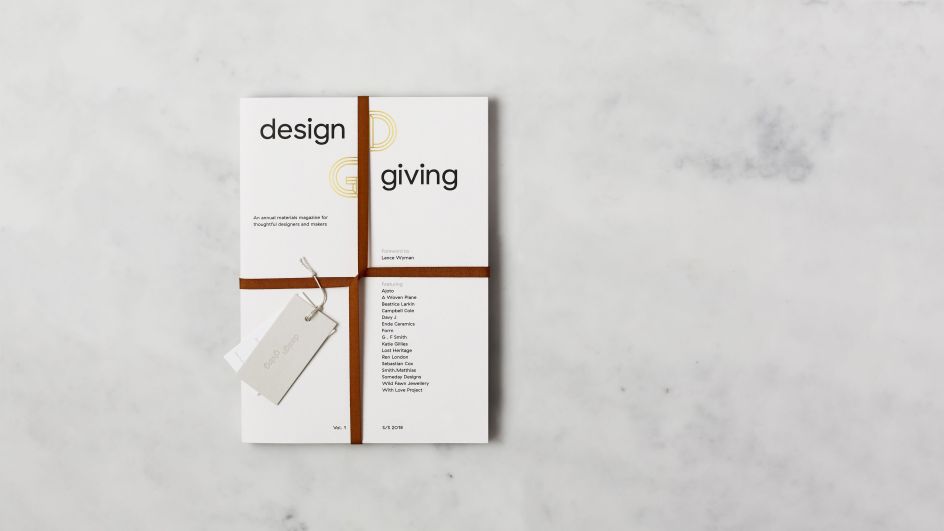
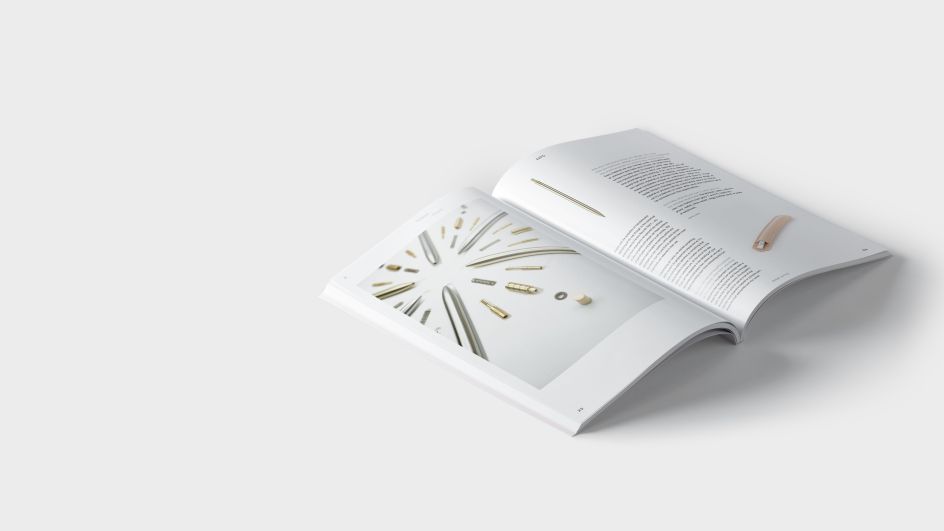
Is it important to run side projects?
The simple answer is yes! For me, side projects teach you a lot about yourself, what you love and how you like to work. It’s when you have no deadlines or restrictions where your passion really come out.
In most cases, you don’t fully understand what you love doing until you actually do it. And often as designers, we have a huge list of things that we want to design, but would never come through client work – so the only way to do it is by creating your own project.
It’s those projects where you probably spend hours upon hours perfecting and developing something for your own enjoyment and pleasure. Client work could never compete. By creating my own stationery and greeting cards, for example, it only fuelled my love for materials and print even more.
Tell us more about your background. How did you get started?
My journey into the creative industries was relatively straightforward: college, followed by university studying Graphic Design at Salford.
Whilst at university I was really passionate about sustainable graphics, so decided to study a masters in Communication Design.
A week after finishing I moved to Wales to start a job with a studio that worked with clients to deliver social and environmental change – I guess that’s where I really saw the connection between design and how it can help people and the planet.
I stayed in that job for five years but then got to the point where I wanted to push myself further, so decided to move back home to Manchester and set up a studio. When I left, I had a few freelance clients so I was lucky to be able to get going straight away. I had no real plan at first. It took me a couple of years to really uncover my passion for print, and never looked back since.
Laura, you're very well-known and loved in Manchester. I've never been made to feel so welcome in a new city. What's your secret?
That’s very kind of you to say, Katy! When I moved back home to Manchester in 2014 I felt exactly the same. The people here are so friendly, especially in the design community – everyone made me feel so welcome, so I guess it’s that feeling I got, what I want others to feel too.
I always try to be positive, happy and helpful in any way I can – that’s just part of my personality. There is no better feeling than knowing you’ve made others happy too!
You often work at weekends. Do you ever stop?
Whenever I leave for the morning train to head to the studio, I always have to listen to a podcast or use a pen and paper to jot down thoughts and ideas about the projects I’m working on.
I’m definitely one of those people who needs to be constantly "doing". I feel incredibly lucky that I don’t ever consider my work as a job. Design, in all of the many definitions of the word, is part of my everyday life.
Whether I choose to work at six o’clock on a Monday morning, or at four o’clock on a Saturday afternoon, it’s something that I love and would never want to stop.
Don’t lose sight of what you’re passionate about — invest time to get to know what you love, do side projects, be yourself and stick to your own processes of working.
Tell us something about yourself that might surprise us
When I was in school I was completely obsessed with Boyzone. (Come on, who wasn’t?) Me, my sister and our three close friends regularly camped out to buy tickets to their concerts – which, at the time, was the only way to get front row seats.
In my last year of school, we decided to take our love and dedication to the next level and go to Dublin to visit their mum’s houses. Why we thought this was normal I’m not so sure! We arrived in Dublin with Stephen Gately’s mum’s home address, where he grew up, knocked on the door and she kindly let us in for a cup of tea! I cried as soon as I stepped through the door. Took photographs of every photo on the wall in her house, and had my picture taken holding a Smash Hits Award! Absolutely loved it.
You're often seen sniffing and stroking card (true story). Out of all the wonderful materials at your disposal, do you have any favourites?
Haha, that is very true! Whenever I find a new material I do get very excited… especially if it involves foil or anything shiny. But my favourite of all materials would have to be paper. As boring as that might sound. I think of paper as something as precious as gold and as fragile as porcelain. The beauty of paper for me is its versatility. Paper can be folded, die-cut, letterpressed, foiled, embossed, duplexed… the possibilities are endless. I just love how accessible it is.
No matter what budget, paper can range from something really affordable to complete high-end luxury which, as a designer, really allows me to tailor the choice of paper to the right project. Paper has an ability to transform the look and feel of a brand. By creating a few folds, using embossed papers and a simple die-cut you can create something that feels really unique.
When I visited the G.F Smith's showroom earlier this year, I got to have a go at using their embossing machine, which just blew my mind. If you think of how much time, effort and engineering have gone into creating a single piece of paper, I think it’s genius.
When it comes to choosing the right materials for your projects, how do you pick them?
At the stage when I’m ready to specify the materials, I have to hand a sentence that describes my concept or idea for the project, a theme, a set of values and a colour palette. This ultimately helps to keep my decision-making much more focused, as it sets out a few rules and limitations.
For my recent Rapha programme design, for instance, the theme was road cycling, the brand colours were pink, white and black, and the event took place in Manchester. From there, I specified G.F Smith’s Colorplan Candy Pink Granular Embossed paper to mimic the texture of tarmac and with a simple speaker map set on a northwest angle of -25 degrees I was able to link it to Manchester.
You sometimes guest lecture or meet with students – what do you enjoy about the experience?
"I love learning, sharing knowledge and motivating others," is a phrase I have used to describe myself for as long as I can remember. The pure joy of seeing a student really grow or become inspired by what you show them is an incredible feeling. I wish there were more of me, so I had more time to give back.
Do you have any top tips for graduates just starting out in the design world?
For any new students starting out I’d say don’t lose sight of what you’re passionate about — invest time to get to know what you love, do side projects, be yourself and stick to your own processes of working.
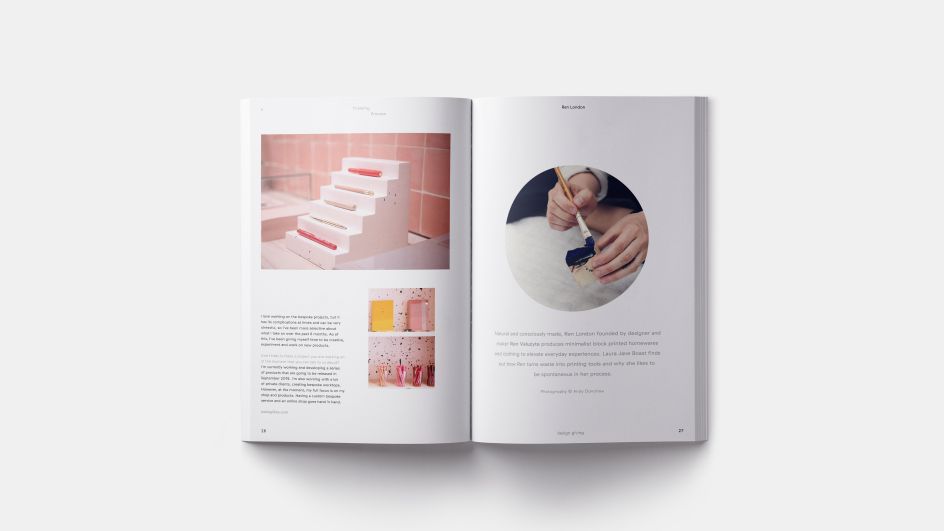
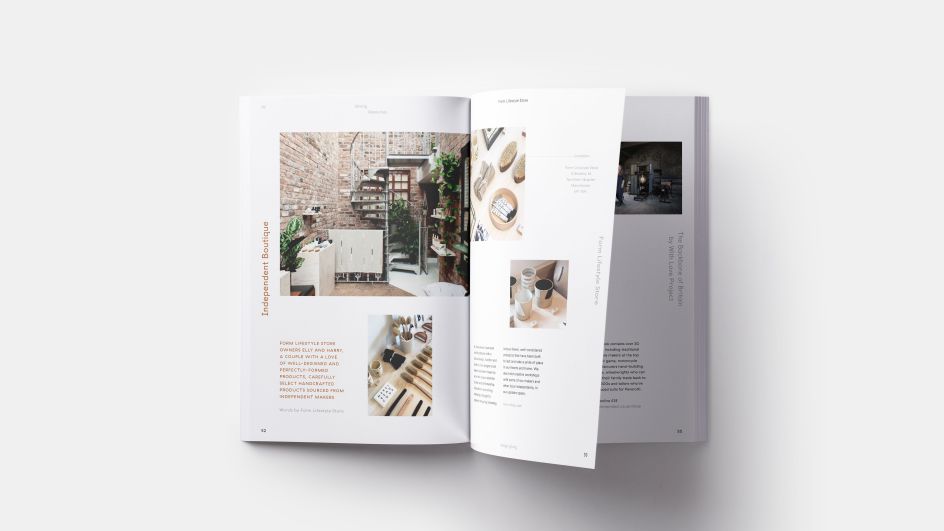
So what can we expect from the first edition of Design Giving?
The first issue features 68 pages of carefully selected and specially commissioned interviews and stories with both established and emerging independent designers and makers from various creative disciplines; bringing you thoughtfully-designed clothing, jewellery, books, stationery and home accessories. For balance, I made a conscious decision that each designer should feature works with a different material.
For the first issue of Design Giving magazine, it was an honour to welcome our guest contributor Lance Wyman, a true design icon who, for over five decades, has helped redefine the field of environmental graphics.
I am incredibly grateful to the designers and makers who have entrusted me with their work and shared their reflections on topics including working practices, personal motivations, choosing and sourcing materials, creativity and inspiration, techniques and processes, etc.
Each volume of Design Giving magazine consists of four feature sections:
I – Design investigates designers' meaningful rationales
II – Thinking interviews designers & celebrates their working processes
III – Thoughtful shares stories from a designer’s perspective
IV – Giving recommends useful material resources.
Tell us more about the accompanying exhibition
Our Kickstarter Launch Exhibition is taking place on Thursday 31 May 2018, at Form Lifestyle Store in Manchester's Northern Quarter.
The show will include previews of the magazine, a chance to take a first-look at some exclusive Design Giving printed paper goods and the opportunity to get up-close with the magnificent products from the 16 designers and makers featured in the magazine – all of which will be available to pre-order from today.
I’m really looking forward to taking some time-out to reflect on all the amazing things that have happened over the past few months.

















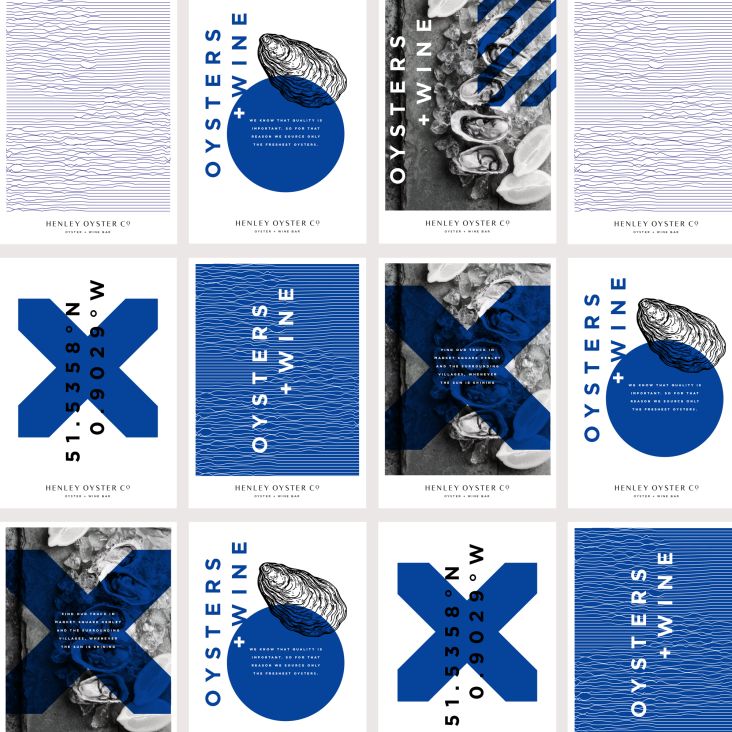
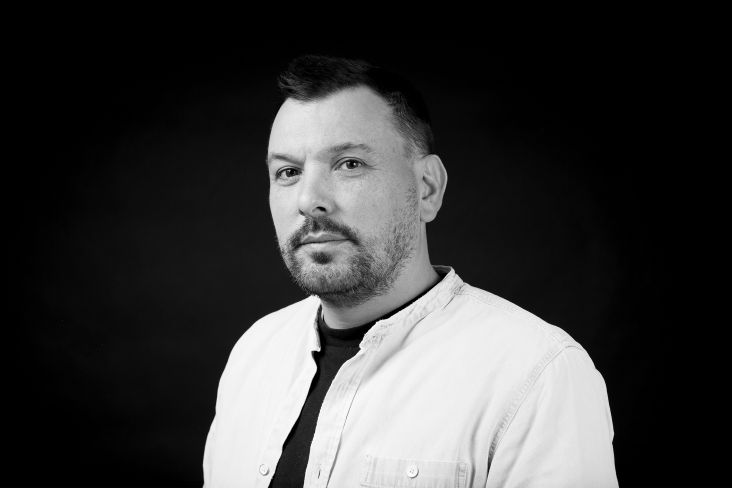
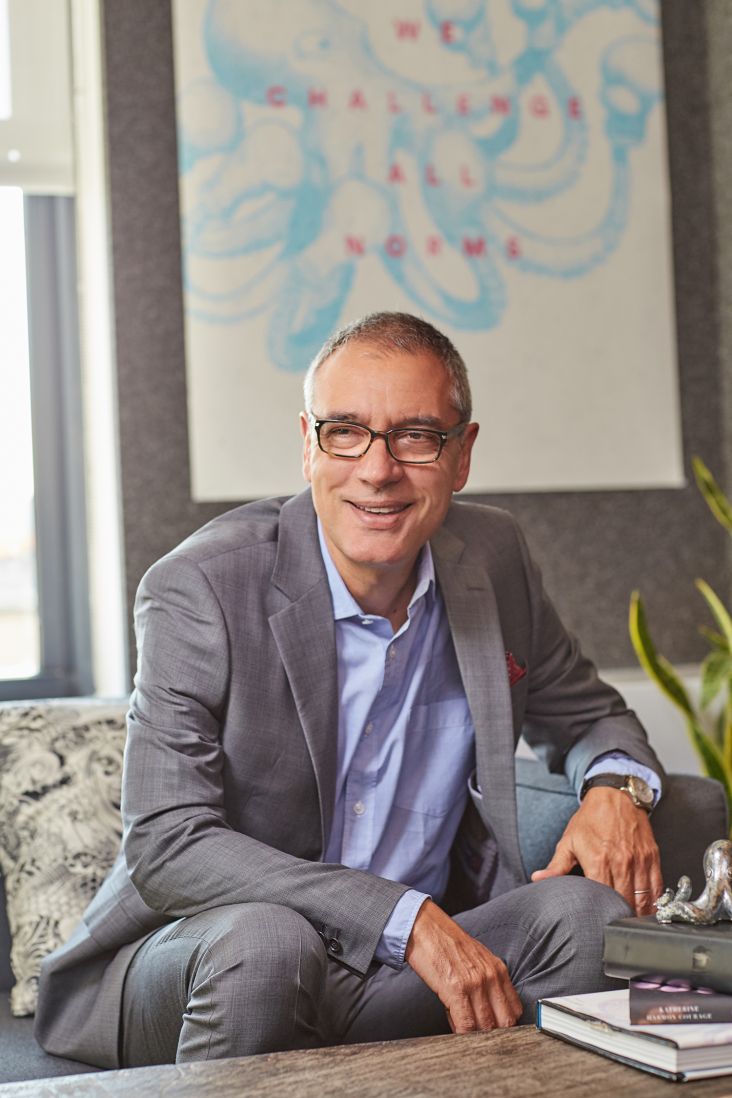
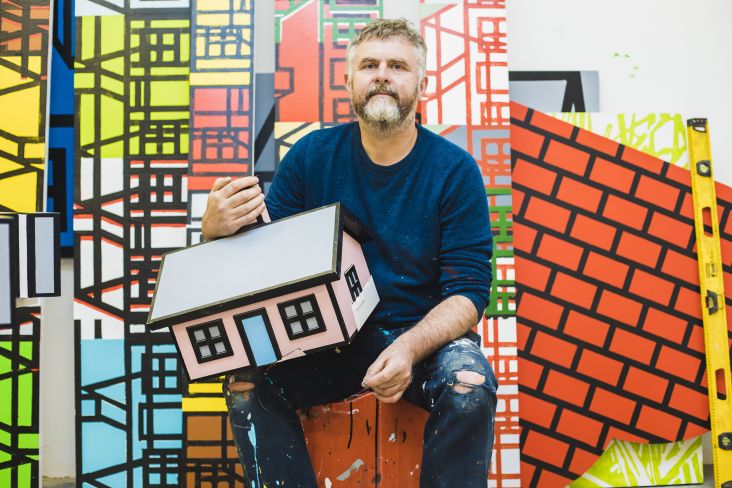
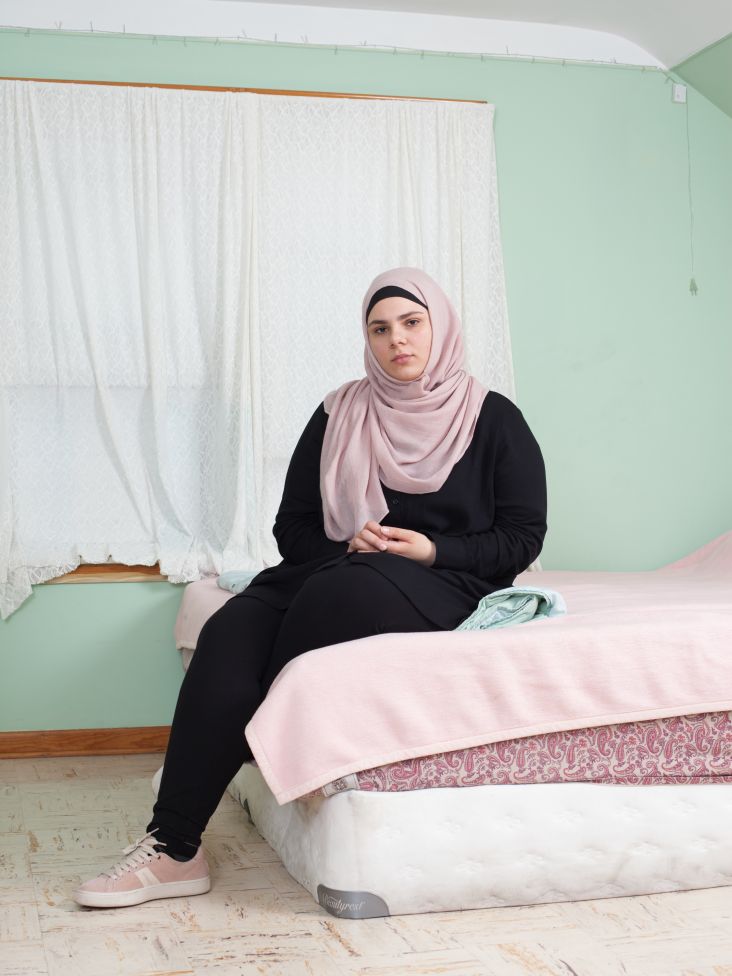
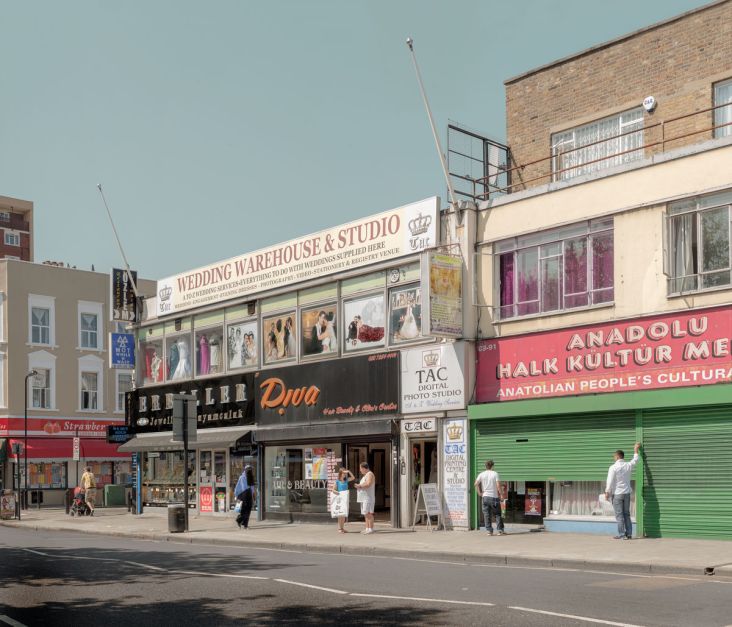
](https://www.creativeboom.com/upload/articles/c3/c38fc5408ca98ff97817ce90bc5e2e79eede8d43_732.jpg)
